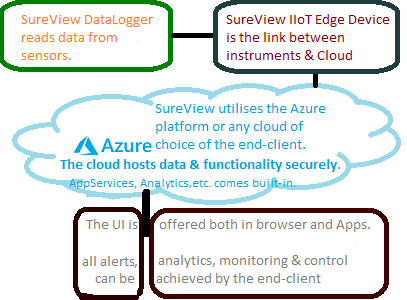We developed certain IIoT solutions in 2018, about which I’m blogging here.
I started with this one because of a special reason. Few years back, when we started involving the Internet & Wireless Networks in the core products we build in our Mumbai factory, we received lot of eager inquiries from other instrument manufacturers, users & from the community of decision-makers. They were all very excited about this IoT thing, but they also complained that they did not want to just scrap their valuable assets in order to bring internet & analytics to the factory floor. They wanted us to somehow develop interfaces that they can ‘plug-in’ their machines & make them smart. This couldn’t be done overnight! The ‘machine’ could be a test equipment for miniature circuit breaker or a fermenter or a oil refining rig or just about anything that makes life easier
Each one of these came with disparate interfaces, protocols or none at all! So after a lot of factory visits & pondering, we came up with some ‘edge’ devices that can be interfaced with your existing equipment and take it to the cloud. Some instruments do come with Ethernet interface these days. But in most cases or if you need to install at a location where only mobile network is available, you still need an edge-device like the one used in the system described here or like what we use in our cellular-enabled reverse osmosis control module. The worst case is to just sniff data from say a 7-segment display. More on other edge devices on a later date…
So, the solution here is a retrofitted system on a machine already in use at our customer’s facility.
The system here comprises of sensors (we make some popular sensors as well), data-logger (our own make), IIoT edge-device (retrofitted), Microsoft Azure cloud, an ASP.Net based website, Android App & iOS App. The data-logger (manufactured by us) with sensors is mounted directly on the machine from which the measurement are made (I’m sorry I cannot disclose what machine & which exact sensors due to the non-disclosure agreement with the client). The IIoT edge-device which forms the interface between the data-logger & cloud, is connected to the data-logger to make it Internet-enabled. The rest of the system is a .Net based website, SQL Server on Azure, Android App & iOS App.
Here’s how it looks graphically:

I hope I have given a fair idea of what an embedded data-logger that is IoT enabled looks like. Do write to me if you find use of such a system or just to share any thoughts!
